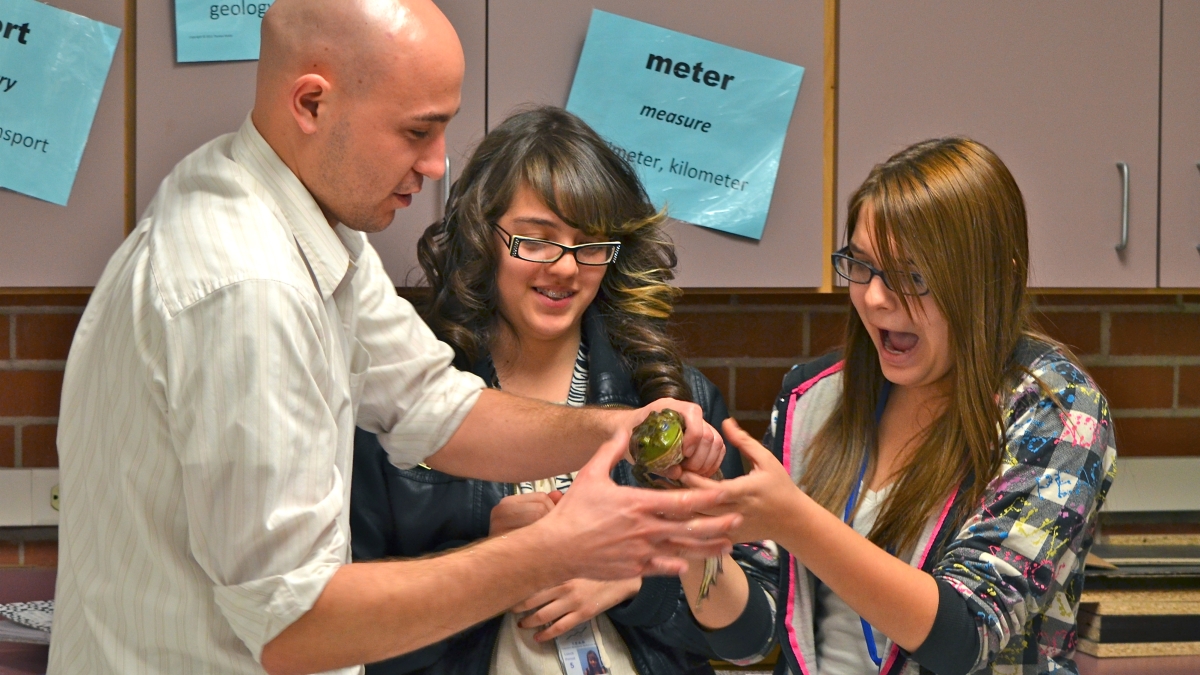Brains, bugs and bullfrogs highlight ASU after-school science program

Holding a real brain might seem a bit out of the ordinary, but for middle school students participating in a free Arizona State University after-school science program, it’s all part of the fun. Dozens of sixth-, seventh- and eighth-graders are learning about the life sciences during “hands-on” experiences focused on the theme “energy meets biology.”
Graduate students from the School of Life Sciences are the brains behind the free program. Mentors with “Graduate Partners in Science Education” (GPSE) develop lessons aimed at providing fun and interactive science experiences for students in underserved schools.
“The goal of Graduate Partners in Science Education is two-pronged,” said Russell Ligon, co-director of the organization and graduate student in the school. “One, to bring high quality, hands-on scientific experiences to local middle school students, and two, to give the graduate student mentors experience in working with and communicating to children, to non-scientists, and to the public at large.”
Lesson topics vary from learning about brains and coral, to discovering the physiology and behavior of live bullfrogs, leaf cutter ants and black widow spiders. Students are exposed to topics such as thermoregulation, urban ecology, adaptation, and how some animals work together to survive. Each class provides the kids with an opportunity to be actively engaged in the topic.
“We dissected brains and took notes on the length, height, weight, and we touched them with the glove and it was all wet – eww!” exclaimed Jaela Mitchell, a sixth grader at Laird Elementary school. “I was surprised at the sizes. Some of them are so small, they don’t even look like brains.”
Five pairs of mentors worked with more than 80 students just this semester and GPSE completed its eighth year of classroom mentorship. For the past three months, the group worked with Gilliland and Laird schools in the Tempe Elementary School District, and Kenilworth in the Phoenix Elementary School District. Some of the schools’ science teachers aligned their lesson plans with the topics presented by GPSE mentors.
“Our theme for this semester was energy meets biology,” says Shelley Valle, a doctoral student in the School of Life Sciences and GPSE mentor. “Our lessons are based on that concept and we try to create hands-on, inquiry-based experiences for the students. I want them to have a positive impression of science, so they will realize that science is a good area to study as they get older.”
In the fall, GPSE mentors create lesson plans and learn basic teaching and mentoring skills. In the spring, the group works directly with students in their classrooms. At the end of the program, students create posters highlighting the science topics they learned and present them to their families and friends. Group leaders expect the program to expand next year as they continue exposing student to many different topics related to biology.
“At the end of the day, we really want them to have positive experiences with science because this is such a crucial age for whether you lose a student forever or whether you get them hooked on science,” shared Ligon.
GPSE’s faculty advisor is Andrew Webber, a professor with the School of Life Sciences. The group also receives support from the school’s director, Brian Smith, and Jürgen Gadau, the school’s associate dean for graduate studies. Brett Seymoure is GPSE's co-director and a graduate student in the school.
School of Life Sciences is an academic unit of the College of Liberal Arts and Sciences.